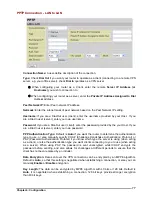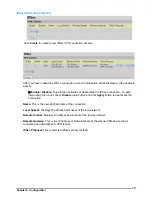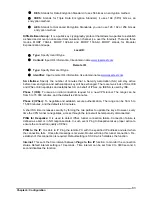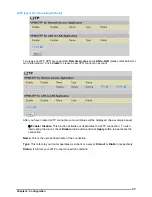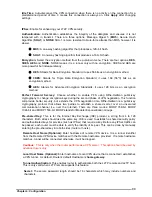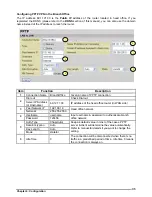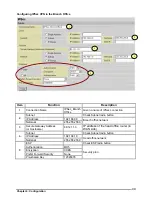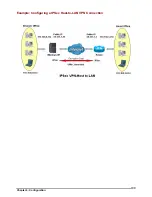
Chapter 4: Configuration
87
Authentication:
Authentication establishes the integrity of the datagram and ensures it is not
tampered with in transmit. There are three options, Message Digest 5 (
MD5
), Secure Hash
Algorithm (
SHA1
) or
NONE
. SHA1 is more resistant to brute-force attacks than MD5, however it is
slower.
MD5:
A one-way hashing algorithm that produces a 128
−
bit hash.
SHA1:
A one-way hashing algorithm that produces a 160
−
bit hash.
Encryption:
Select the encryption method from the pull-down menu. There are four options,
DES
,
3DES
,
AES
and
NONE
. NONE means it is a tunnel only with no encryption. 3DES and AES are
more powerful but increase latency.
DES:
Stands for Data Encryption Standard, it uses 56 bits as an encryption method.
3DES:
Stands for Triple Data Encryption Standard, it uses 168 (56*3) bits as an
encryption method.
AES:
Stands for Advanced Encryption Standards, it uses 128 bits as an encryption
method.
Perfect Forward Secrecy:
Choose whether to enable PFS using Diffie-Hellman public-key
cryptography to change encryption keys during the second phase of VPN negotiation. This function
will provide better security, but extends the VPN negotiation time. Diffie-Hellman is a public-key
cryptography protocol that allows two parties to establish a shared secret over an unsecured
communication channel (i.e. over the Internet). There are three modes, MODP 768-bit, MODP
1024-bit and MODP 1536-bit. MODP stands for Modular Exponentiation Groups.
Pre-shared Key:
This is for the Internet Key Exchange (IKE) protocol, a string from 4 to 128
characters. Both sides should use the same key. IKE is used to establish a shared security policy
and authenticated keys for services (such as IPSec) that require a key. Before any IPSec traffic can
be passed, each router must be able to verify the identity of its peer. This can be done by manually
entering the pre-shared key into both sides (router or hosts).
Remote Host Name (Optional):
Enter hostname of remote VPN device. It is a tunnel identifier
from the Remote VPN device matches with the Remote hostname provided. If remote hostname
matches, tunnel will be connected; otherwise, it will be dropped.
Cautious:
This is only when the router performs as a VPN server. This option should be used by
advanced users only.
Local Host Name (Optional):
Enter hostname of Local VPN device that is connected / establishes
a VPN tunnel. As default, Router’s default Hostname is
home.gateway.
Tunnel Authentication:
This enables router to authenticate both the L2TP remote and L2TP host.
This is only valid when L2TP remote supports this feature.
Secret:
The secure password length should be 16 characters which may include numbers and
characters.





